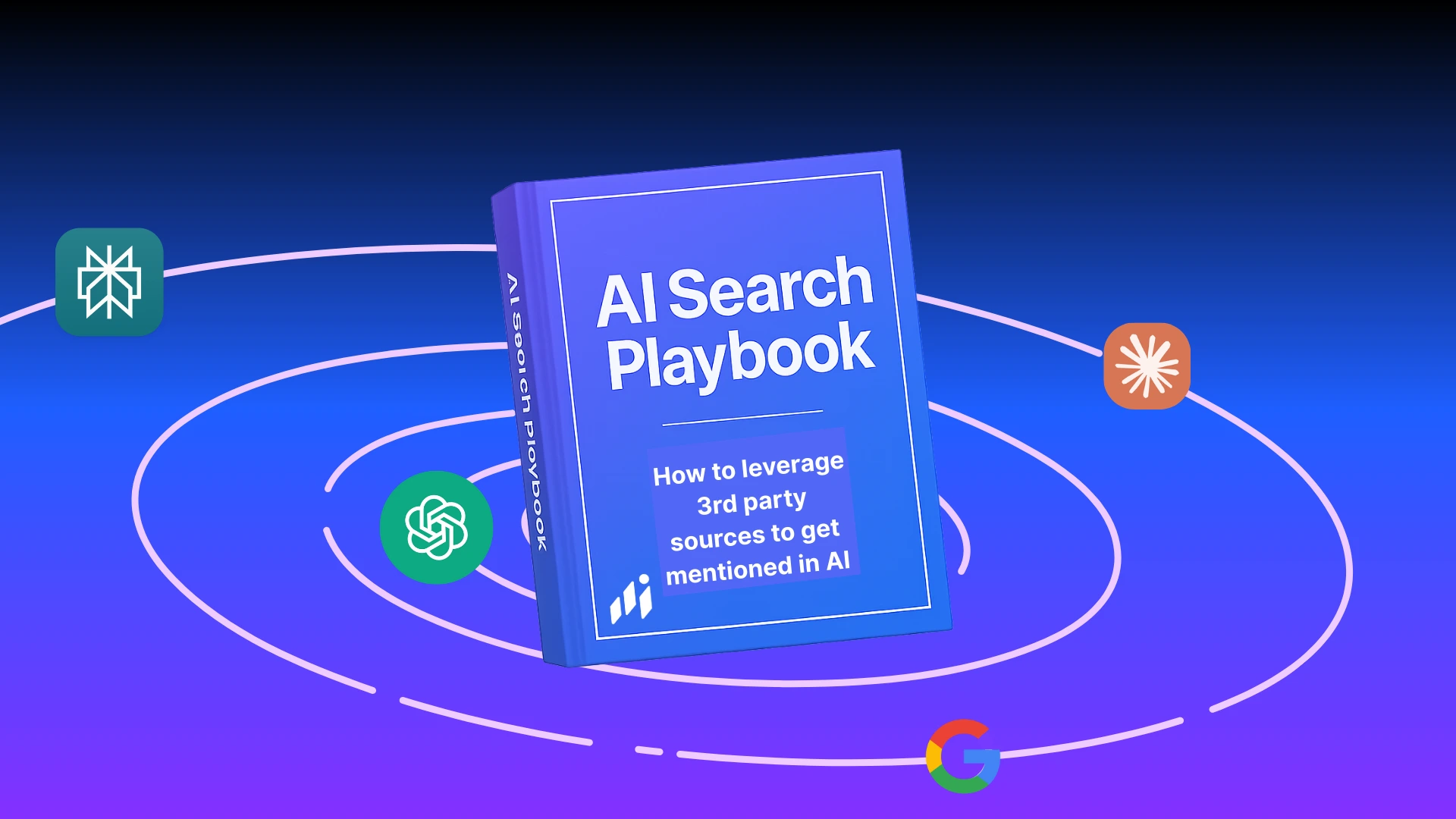AI search engines like ChatGPT, Perplexity, and Google AI Overviews don't just look at your own website when talking about you and your market. They synthesize answers from a wide web of sources; blogs, review platforms, affiliate media, comparison sites, and industry magazines. If your brand is mentioned consistently and contextually across these third-party sites, your chances of being cited skyrocket.
This makes third-party coverage one of the most efficient methods in Answer Engine Optimization (AEO). Of course it is not always easy and cheap to get your brand into those places, that's why we wrote this guide.
Step 1: How To Find Relevant Third-Party Sources in the first place
The first step is knowing where your brand or competitors are being cited already, or which content is cited, but none of you are in it (Those are the gold nuggets). You want to identify which external domains the AI engines cite the most.
- Use AEO tracking tools: Platforms like jarts.io (or your own monitoring setup) surface which review pages, blogs, or publications get cited in ChatGPT/ Google AI Overviews/ Perplexity answers.
- Prompt-based discovery: Run structured prompts (e.g., "best [category] tools for [use case]") in multiple engines and analyze which third-party sites appear in the citations.
- Competitive benchmarking: Track not just where you are mentioned, but where your competitors consistently show up: reviews, niche blogs, Wikipedia entries, or comparison pages.
This mapping gives you a target list of domains that influence AI recommendations in your market.
Step 2: Choosing the Right Third-Party Sites
Not all mentions carry equal weight. Answer engines weigh sources based on authority, structure, and relevance. Here's what to prioritize:
High-Value Source Types
| Source Type | Examples | Why AI Loves Them |
|---|---|---|
| Industry publications | TechCrunch, Forbes, industry-specific outlets | High authority, editorial oversight, fresh content |
| Review platforms | G2, Capterra, TrustRadius | Structured comparisons, user-generated content |
| Niche expert blogs | Industry-specific blogs with deep expertise | Detailed comparisons, pros/cons, fresh updates |
| Affiliate/commerce sites | TechRadar, Investopedia, Wirecutter-style | Comprehensive reviews, structured data |
AI Preference Criteria
| Criteria | What AI Looks For | Impact on Citations |
|---|---|---|
| Structure | Lists, comparison tables, clear FAQs | High - Easy to parse and extract |
| Freshness | Updated within the last ~6 months | High - Recent content gets priority |
| Comprehensiveness | Multiple products, aspects, trade-offs | Medium - Provides context |
| Authority | Clear authorship, credentials, oversight | High - Trust signals matter |
Step 3: Getting Your Brand Into These Sources
Now comes the execution. You need a playbook to earn and sustain mentions across the right sites:
| Strategy | How to Execute | Why It Works for AI | Effort Level |
|---|---|---|---|
| Outreach & PR | Build relationships with editors, journalists, and bloggers. Provide fresh data, research, or expert commentary | High authority sources with editorial oversight | Medium |
| Affiliate partnerships | Negotiate inclusion in monetized comparison articles. Ensure fair positioning | Structured comparison content AI can easily parse | High |
| Review site optimization | Encourage detailed, structured reviews on G2, Capterra, TrustRadius | User-generated content with structured data | Low |
| Guest contributions | Pitch thought leadership with structured tables and BLUF summaries | Easy to cite with clear structure and verdicts | Medium |
| Proprietary data | Publish unique benchmarks, usage stats, or reports | Original, quotable numbers that AI loves | Low |
Seed structured pros/cons or short verdicts in contributed copy. These formats are directly scrapable by AIs.
Step 4: Maintaining and Expanding Coverage
Getting in once is not enough. You need to keep citations alive and fresh:
- Refresh cadence: Aim for updated reviews or new mentions every 90–120 days.
- Track accuracy: Monitor how AI describes your brand. If features are outdated or wrong, correct them at the source, reach out to editors.
- Diversify sources: Avoid reliance on one or two domains. The broader your citation footprint, the more resilient your AI visibility becomes.
Fast-Win Tactics: Extra Candy
These are low-cost, high-value moves you can apply immediately.
1. Data-Driven Micro-Insights
- Pull 1–3 unique statistics from your user or product data.
- Package them as a mini infographic or media brief.
- Pitch them to niche blogs or industry newsletters in the style of: "Here's a stat you can quote in your next article on [topic]." And offer them a coffee of course.
- Because it's original data, it's more likely to be quoted and cited by AI engines.
2. Trend Jacking with Commentary
- Track trending topics in your industry via Google Trends or social monitoring.
- Quickly create a short commentary or "what this means" take.
- Offer it to blogs, media outlets, or even as a LinkedIn post that niche writers can reference.
- Since it's topical, it's more attractive for editors and your brand becomes part of the story AI scrapes.
Why This Matters
In AEO, success isn't about ranking #1, it's about being mentioned repeatedly across the right sources. If an AI Engine sees your brand on five independent review sites, two industry blogs, and a comparison article, you become the natural candidate to appear in its synthesized answer.
Third-party sites are therefore not just "PR coverage." They are the fuel for AI citation frequency and a direct growth lever for brand visibility.
About the Author

Vincent Betz
Researcher & Advisor for Answer Engine Optimization
I’m Vincent Betz, Researcher & Advisor for Answer Engine Optimization at Jarts. For+2 years we ran & analyzed over 75.000 prompts in collaboration with brands, agencies, and universities. In 2025 companies used our proven techniques to Boost AI market share of answers to 75%, and Drive 1.000s of Referral Traffic from ChatGPT & co.
Next advanced step:
👉 Next in this playbook, we'll look at tactical earned media channels like Reddit and YouTube. But if you do one thing today, start mapping and securing structured mentions on third-party sites. That's where the AI engines are looking.
Turn this playbook into results in 7 days
We’ll map your highest‑leverage third‑party targets, draft structured copy editors will love, and help you secure your first citations.
